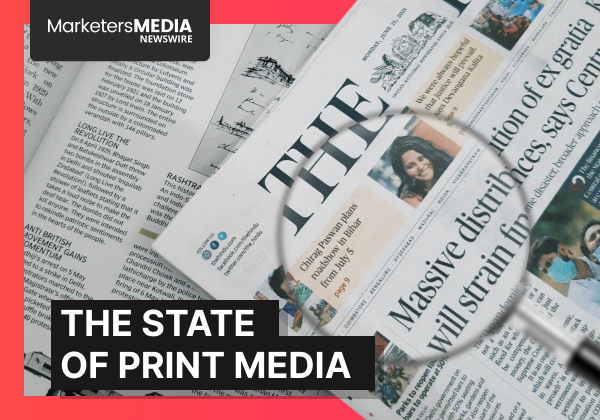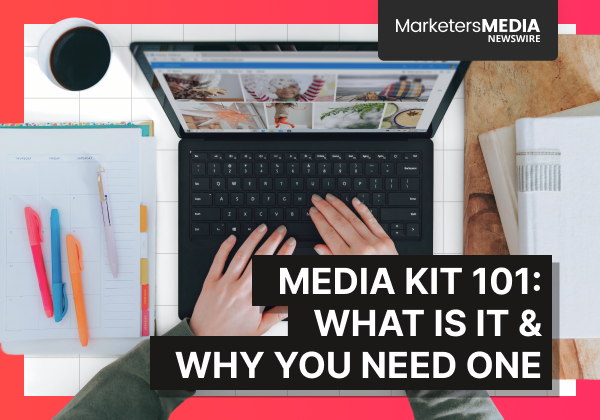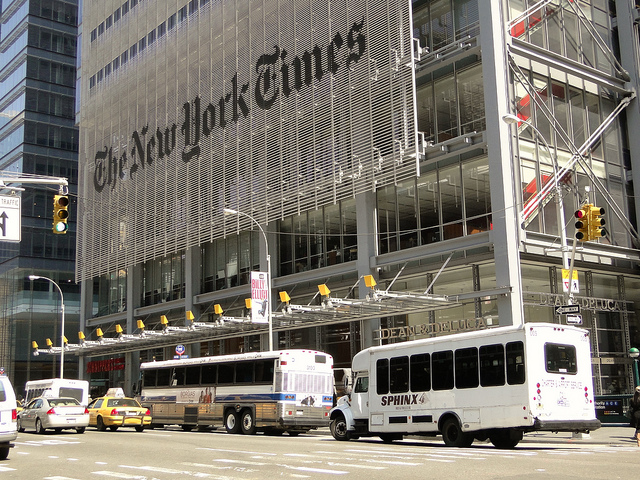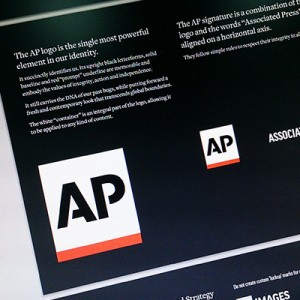Print media includes anything produced by pressing ink onto a physical surface—newspapers, magazines, brochures, flyers, even billboards.
It’s physical, readable, and still powerful.
Despite digital competition, print continues to perform. Studies show print ads trigger 20% stronger motivation and 77% higher brand recall than digital. They also require 21% less mental effort to process.
Why does it still work? Print feels real. It’s trusted. It holds attention without the noise of pop-ups and screens.
A Brief Look at Print's Journey
Early Beginnings: From Ancient China to Gutenberg's Revolution
Print media's story began in ancient China with the Diamond Sutra in 868 CE.
But the real game-changer came in 1440 when Johannes Gutenberg invented his printing press in Germany. His innovation could produce 3,600 pages per workday compared to 40 pages by hand-copying.
The technology spread like wildfire across Europe.
In America, the first continuous newspaper was The Boston News-Letter in 1704. By the mid-1760s, 24 weekly newspapers operated across the 13 colonies.
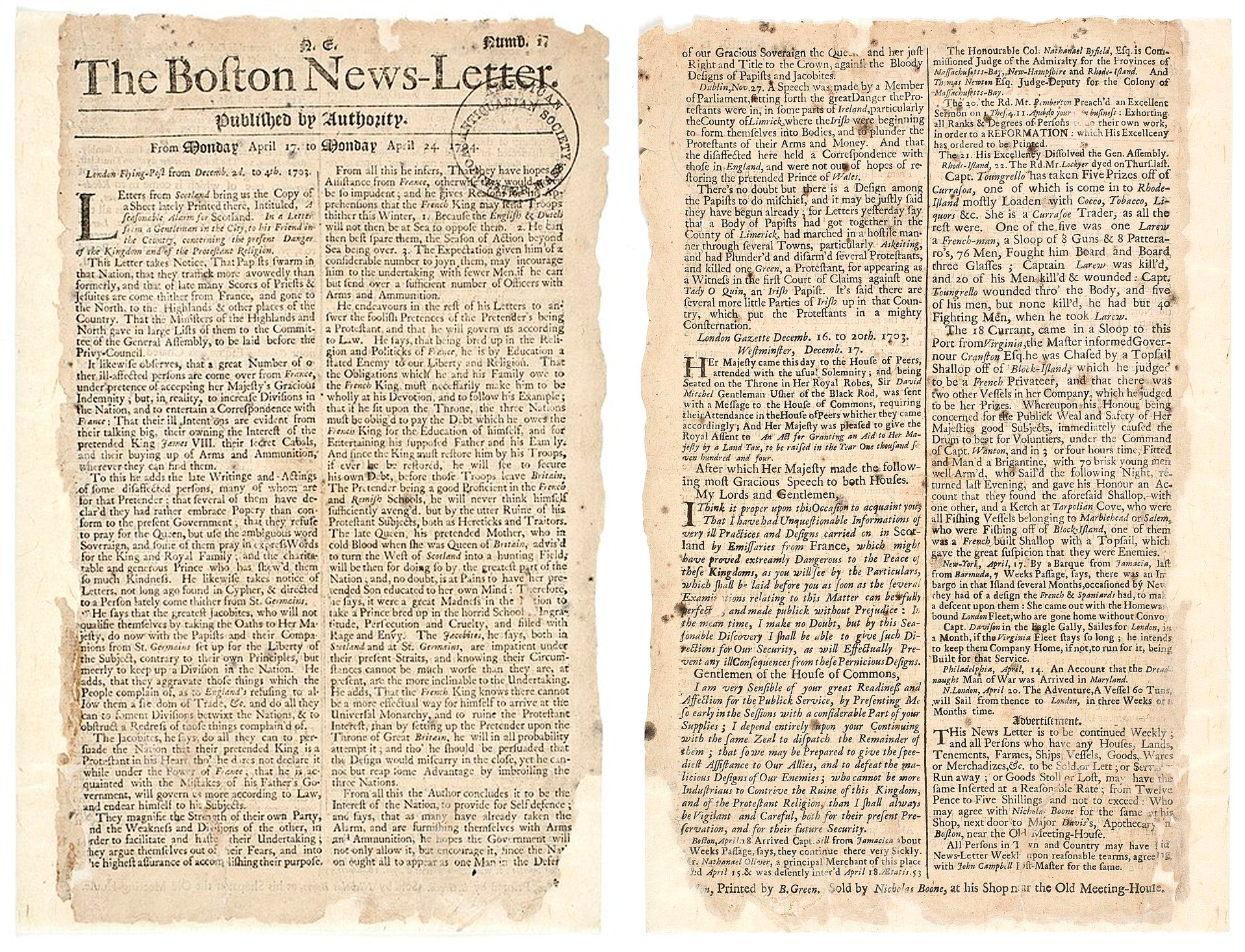
The "Golden Age" and Its Challenges
The "golden age" began in the 1830s with the penny press. Benjamin Day's The Sun dropped newspaper prices to one penny, making news accessible to working people.
Print advertising became highly profitable starting in 1841, but there was one massive problem:
Tracking return on investment was nearly impossible.
Then came the digital revolution.
The Rise of Digital Competition
Digital marketing campaigns appeared as early as 1994. But the real breakthrough happened in 1996 when marketers could finally track sales data from digital media.
This changed everything.
For the first time, advertisers could see exactly which ads generated clicks, conversions, and sales. They could optimize campaigns in real-time and measure return on investment with precision.
Print couldn't compete with this level of accountability.
Advertisers began shifting budgets to digital platforms where every dollar spent could be tracked and justified. Print's advertising market share started declining as businesses demanded measurable results.
The transition accelerated through the 2000s and 2010s. Print newspapers experienced falling circulation and advertising revenue as readers migrated online.
Many established publications faced closure or dramatic downsizing.
But print didn't disappear entirely. Instead, it began adapting and finding new roles within integrated marketing strategies.
Types of Print Media
So what forms of print media are still working today?
Print media encompasses a diverse range of formats, each serving specific communication purposes:
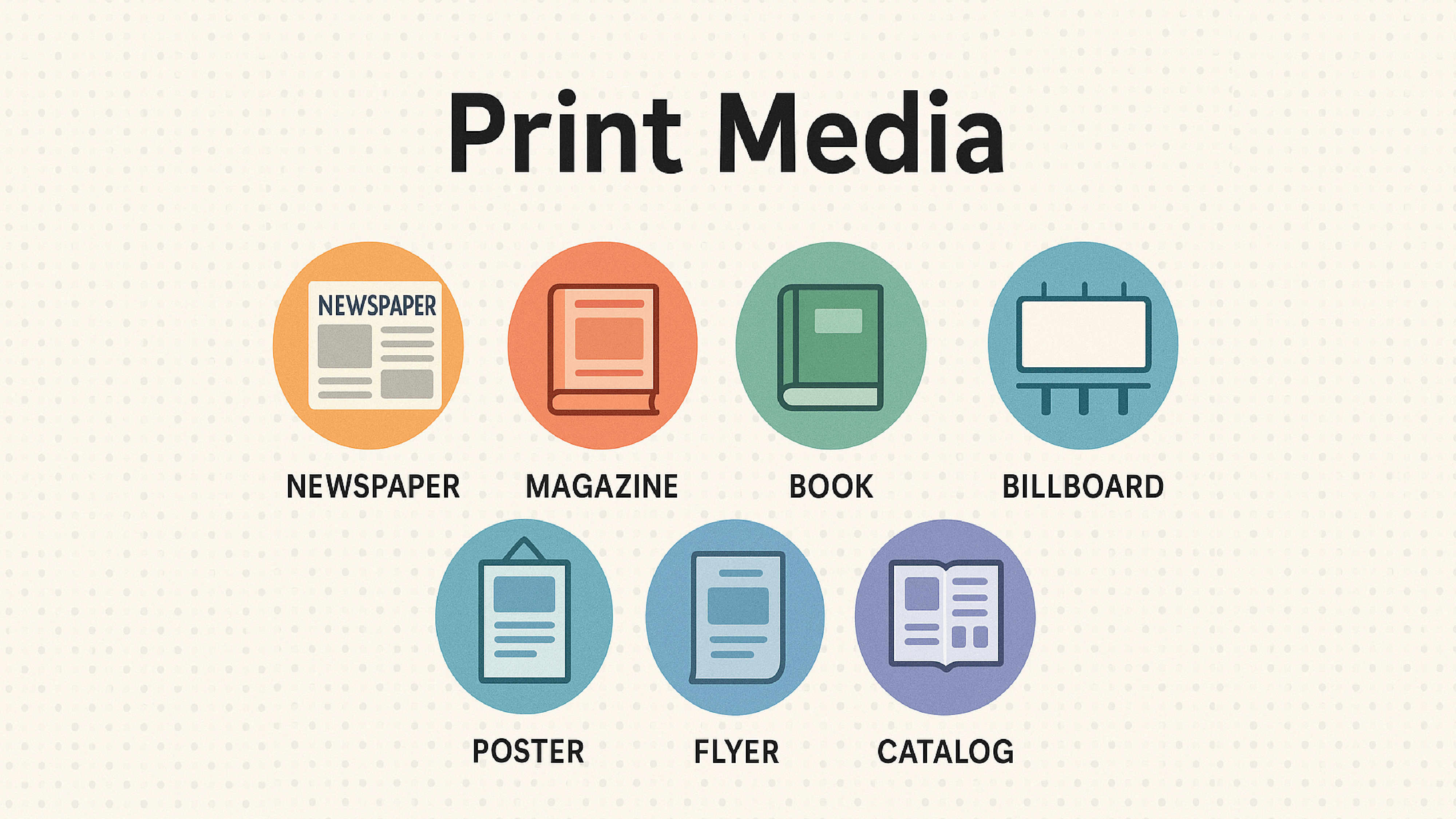
Newspapers remain credible sources for local and political information. They maintain trust advantages that digital struggles to match.
Magazines target specific audiences with high-quality content and premium production values. National Geographic and Harvard Business Review create engagement impossible in shorter digital formats.
Books provide deep, focused learning experiences. Studies show readers comprehend and retain information better from printed books than screens.
Billboards command attention in high-traffic areas with simple, memorable messages.
Posters offer cost-effective advertising for local businesses and events.
Flyers create personal connections through direct distribution while maintaining low production costs.
Catalogs showcase products with detailed photography and information. Luxury brands still use printed catalogs to convey premium positioning.
Coupons drive immediate purchasing decisions. Consumers perceive print coupons as more valuable than digital equivalents.
Each format serves specific communication needs that digital can't fully replace.
But how does print actually compare to digital in performance?
Print vs Digital: The Real Differences
Both print and digital media serve as mass communication vehicles. They inform, advertise, and shape public opinion.
But their strengths lie in different areas.
Print offers a physical experience—something you can hold, revisit, and keep. This leads to stronger memory retention and emotional connection. Print is also perceived as more credible, with higher trust in printed ads compared to digital ones.
Digital excels in speed and interactivity. It delivers instant updates, supports multimedia, and allows precise audience targeting with detailed analytics. It also offers global reach without geographical constraints.
Print provides higher brand recall (77% vs. 46% for digital), less cognitive load for processing information, and immunity to digital distractions. It reaches audiences during power outages or in locations with restricted digital access, such as certain healthcare facilities or educational institutions.
Digital media adds advantages like real-time optimization, cost-effective testing, and personalized experiences at scale.
The most effective campaigns use both—combining print’s impact with digital’s agility for broader, deeper engagement.
How Print Fits Modern Marketing
Print marketing still holds value in a digital-first world. Smart marketers recognize print's unique value within integrated campaigns rather than viewing it as obsolete technology.
It’s especially effective in places like medical offices, luxury retail, and high-end restaurants. In these settings, well-designed print reflects quality and attention to detail.

Print also connects on a deeper level. The feel of premium paper, textured finishes, and bold visuals create a sensory experience screens can’t replicate.
It’s not just offline. Print now drives online actions too.
Think QR codes, short links, or social handles. A flyer can lead to an app download, a direct purchase, or an exclusive landing page. You get the tactile impact of print with trackable digital results.
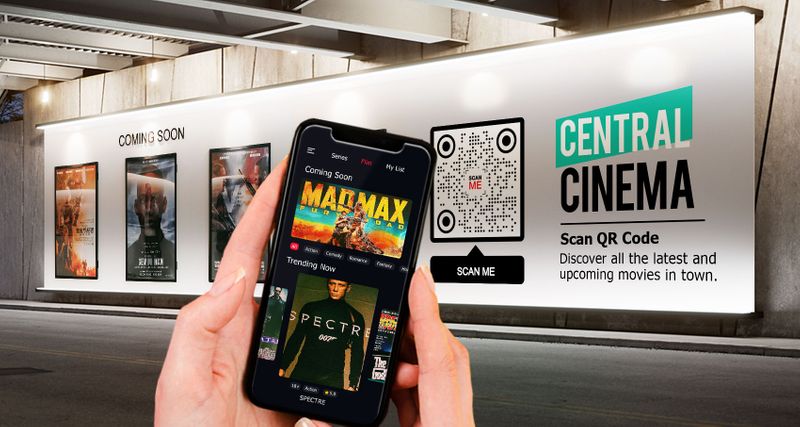
Younger readers engage with it too. Over 90% of people aged 18 to 23 say print is easier to read than digital. And most still read both formats of magazines.
Affluent consumers lean heavily toward print—especially premium magazines and brochures. That makes it a strong fit for luxury brands or high-value services.
Print works. You just have to use it where it counts.
The Future of Print Media
So, with print evolving, what does the road ahead look like?
Well, print isn’t fading, it’s shifting into more strategic roles.
Instead of chasing digital’s scale or speed, print is finding success in areas where it delivers stronger impact—specialized formats, high-impact messaging, and physical experiences that stand out.
One major area of growth is sustainability. Brands are turning to recycled paper, soy-based inks, and carbon-neutral printing. These eco-friendly choices reduce costs and appeal to consumers who care about environmental impact. The green packaging industry alone is projected to hit over $550 billion by 2030.
Technology is also giving print new life.
Tools like augmented reality, NFC chips, and smart packaging turn static materials into interactive experiences. A brochure can launch a video. A product label can lead to an online tutorial. It’s a new kind of engagement that lives in both worlds.

Personalization is another driver. With variable data printing, every copy can be different. Names, offers, images—tailored by location or behavior. It brings print closer to digital’s targeting power without losing its tactile feel.
Smaller, focused audiences are becoming more valuable too. Older demographics, religious communities, and high-end consumers often prefer print. They trust it more and spend more time with it.
Print-on-demand makes this even easier. You can test campaigns, run limited editions, and avoid waste. It’s efficient and flexible.
The future isn’t print versus digital. It’s both working together—each playing its part.
Why Both Print and Digital Still Matter
Print and digital each bring distinct strengths to modern marketing.
While digital delivers instant reach and precise tracking, print provides credibility, focused attention, and emotional connection that screens simply can't match.
The most successful marketing strategies recognize these differences. They use print for premium positioning and deep engagement, while leveraging digital for broad reach and real-time optimization.
Print isn't disappearing—it's becoming more strategic, more targeted, and more valuable as a complement to digital efforts. The key is knowing when to use each medium and how to make them work together for maximum impact.
Want to explore the digital side?
Read next: 8 Key Types of Digital Marketing to see how online channels can work alongside print for a complete strategy.
Frequently Asked Questions (FAQ)
Q: How can I measure the ROI of my print campaigns?
A: Use unique tracking methods like QR codes, custom URLs, specialized phone numbers, or unique promo codes. These tools help you track website visits, conversions, and sales directly from your print materials. You can also ask customers "How did you hear about us?" to gather valuable feedback.
Q: What are the main steps to create a print marketing strategy?
A: Start by defining clear goals (brand awareness, leads, or sales). Next, research your target audience's demographics and interests. Then develop a compelling message with a strong call-to-action. Finally, integrate your print campaign with digital channels and establish a thorough approval process before printing.
Q: What are the best practices for designing print materials?
A: Use high-quality images, readable fonts, and eye-catching colors that match your brand. Incorporate white space to avoid clutter and create clear visual hierarchy. Ensure strong contrast between text and background. Always include a compelling headline and clear call-to-action. Proofread carefully—print errors are costly to fix.
Q: What are the main supply chain challenges currently facing the print industry?
A: The print industry is facing several supply chain challenges, including: persistently rising paper prices due to shortages and increased demand; ink availability issues stemming from compound deficiencies and shipping costs; and labor shortages across the supply chain, which all lead to increased turnaround times for orders.
Q: What distribution channels are available for print materials?
A: Common channels include direct mail campaigns, distribution at events, in-store displays, and partnerships with other businesses. For magazines, you can use direct selling, distributors, or retail outlets. Newspapers increasingly rely on USPS mail delivery. Consider specialized print logistics companies for larger-scale distribution needs.
Free Press Release Template
Tell us where to send your PDF:
